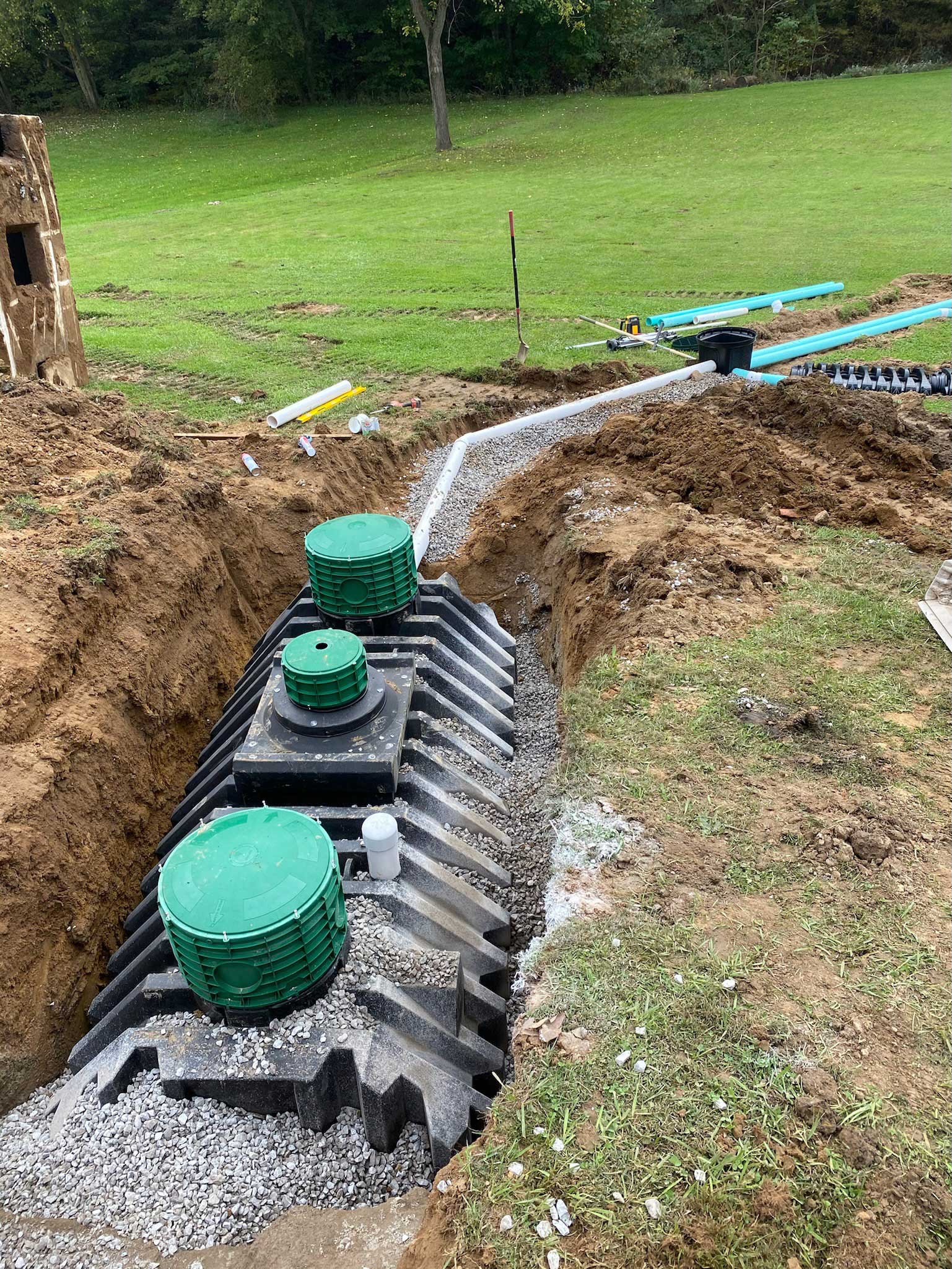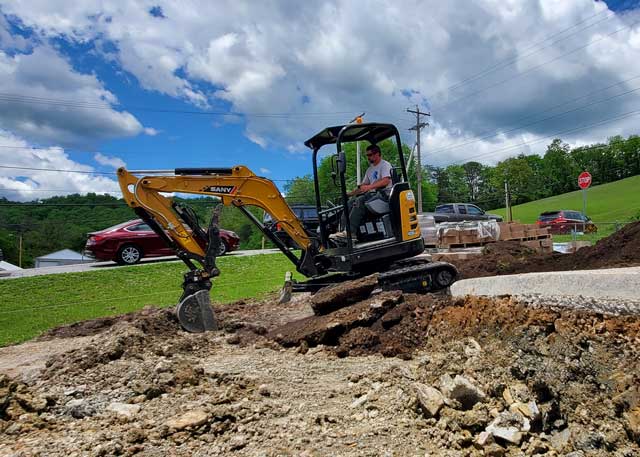Expert Septic Ohio - Relied On Septic Tank Specialists in Ohio
Expert Septic Ohio - Relied On Septic Tank Specialists in Ohio
Blog Article
Introducing the Art of Excavation: Pro Tips for Safe and Effective Excavating
In the realm of excavation, the proficiency of safe and productive digging is an art kind that requires adherence, precision, and knowledge to well-known methods. As soil is transformed and planet is moved, the details of excavation expose themselves, demanding an eager understanding of devices, dirt make-up, security methods, and ecological factors to consider. The proficiency needed to navigate these elements successfully can suggest the difference between a successful excavation job and a possible catastrophe. By unraveling the layers of this complex procedure, a globe of techniques and insights awaits those looking for to boost their excavation abilities to new heights.
Relevance of Proper Devices
To make certain the safety and security and efficiency of any excavation task, utilizing the appropriate equipment is critical. Excavation jobs differ in range and intricacy, ranging from little property landscaping work to large building and construction tasks.
Excavators are fundamental items of equipment in any type of digging procedure. These versatile machines can be found in numerous sizes to suit various job demands. Tiny excavators are excellent for smaller sized jobs, while larger excavators take on extra considerable jobs effectively. Backhoes are one more crucial equipment type, combining the functions of a loader and an excavator in one machine. They are valuable for jobs needing flexibility and maneuverability.
Besides excavators, other crucial devices consists of dump trucks, plates, and bulldozers. Unload vehicles are important for removing and transporting excavated materials, while trenchers are made use of for excavating narrow and deep trenches. Bulldozers excel in jobs that need pressing big quantities of soil or debris. By investing in the ideal equipment, excavation projects can be completed safely, promptly, and with accuracy.
Recognizing Dirt Make-up
A detailed grasp of soil make-up is essential for carrying out excavation projects with precision and safety and security. Comprehending the different kinds of dirt is vital as it directly affects excavation techniques, equipment option, and total task efficiency. Soil make-up commonly is composed of 4 major parts: sand, silt, clay, and raw material. Each component has one-of-a-kind residential or commercial properties that influence how dirt reacts to excavation procedures.
Silt fragments are smaller than sand however larger than clay, offering modest water drainage and communication. Organic matter, such as decomposing plant material, impacts soil fertility and security.
Prior to commencing excavation, carrying out soil examinations to identify its composition and features is crucial. This details assists in selecting the ideal tools, executing precaution, and developing excavation strategies customized to the particular dirt conditions - lancaster trenching. By recognizing dirt structure, excavation professionals can improve project end results while guaranteeing safety and security and adherence to best techniques
Safety Steps and Protocols
Recognizing dirt composition is the foundation whereupon safety measures and methods for excavation jobs are developed, ensuring the wellness of workers and the success of the undertaking. When it pertains to safety during excavation, there are several vital measures that must be applied to reduce dangers and protect against crashes.
Firstly, before any type of excavating starts, a comprehensive inspection of the site must be carried out to recognize any kind of prospective dangers such as underground energies, unsteady dirt conditions, or nearby frameworks that might present a risk. It is critical to have a competent person look after the excavation process to guarantee that all safety protocols are followed strictly.
Furthermore, all employees included in the excavation needs to be correctly trained in secure excavating techniques and the correct operation of devices. By adhering to these security steps and procedures, excavation projects can be finished effectively and without occurrence.
Reliable Excavation Preparation
When starting an excavation task, thorough planning is crucial to guarantee efficiency, safety and security, and successful outcomes. Efficient excavation planning includes numerous key actions that are vital for the smooth execution of the job. The initial step is to carry out a detailed website analysis to identify any possible hazards, such as below ground utilities or unpredictable dirt problems. This details is vital for creating a thorough excavation plan that consists of safety and security steps look at this website and take the chance of mitigation techniques.
Once the site analysis is total, the following action is to develop a clear timeline and schedule for the excavation activities. This consists of identifying the series of jobs, tools demands, and next workforce allocation. Correct organizing aids avoid hold-ups and makes sure that the job remains on track.

Furthermore, communication among all staff member is critical during the planning phase. Clear directives, regular updates, and efficient coordination are necessary for a successful excavation project. By spending effort and time in thorough preparation, excavation teams can considerably boost performance, reduce dangers, and accomplish successful outcomes.

Managing Ecological Factors To Consider
With boosting focus on ecological sustainability in building methods, managing ecological factors to consider has actually come to be an essential facet of excavation jobs. Excavation tasks have the prospective to impact the surrounding atmosphere via soil erosion, debris runoff, environment interruption, and contamination of water sources. To alleviate these risks, it is important to execute ideal methods that focus on environmental management.

Moreover, appropriate waste administration is vital to avoid dirt and water contamination. Carrying out procedures for the disposal of hazardous materials, recycling of waste products, and minimizing the usage of unsafe chemicals can dramatically minimize the environmental effect of excavation jobs. By integrating these practices right into excavation planning and implementation, construction companies can ensure that their projects are not just risk-free and efficient but additionally eco accountable.
Conclusion
To conclude, mastering the art of excavation calls for an extensive understanding of appropriate tools, soil make-up, precaution, and reliable planning. By adhering to these guidelines and considering ecological elements, excavations can be performed securely and efficiently. It is critical to prioritize security and efficiency in every digging task to guarantee effective results.
As dirt is transformed and earth is relocated, the complexities of excavation expose themselves, requiring a keen understanding of devices, soil make-up, security methods, and ecological considerations.To make certain the safety and efficiency of any type of excavation task, utilizing the ideal equipment is extremely important.An extensive understanding of dirt structure is basic for carrying out excavation tasks with precision and security. Comprehending the various kinds of dirt is essential as it directly affects excavation approaches, equipment choice, and total job performance. By understanding soil structure, excavation specialists can enhance job end results while making sure safety and security and adherence to ideal methods.
Report this page